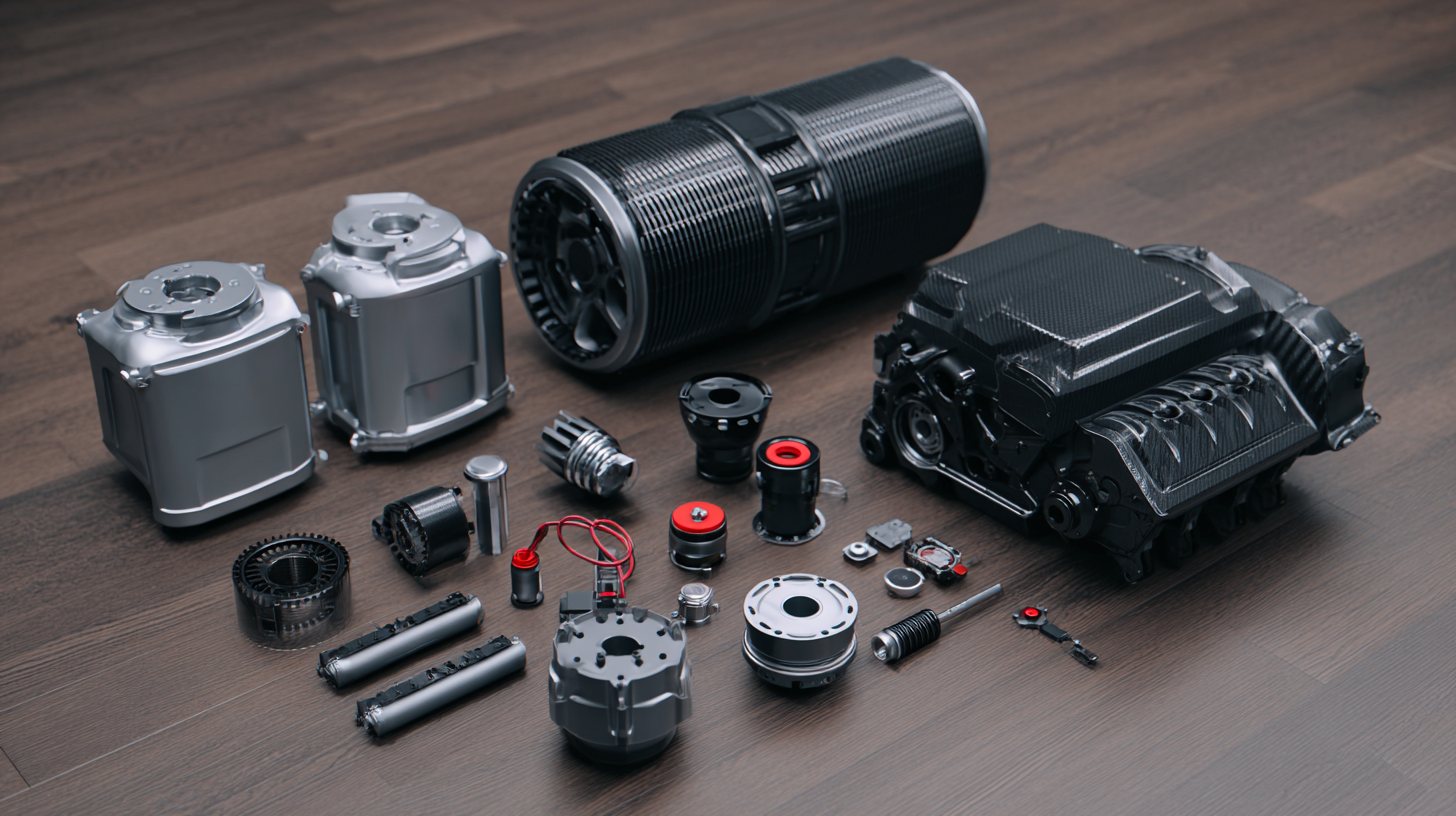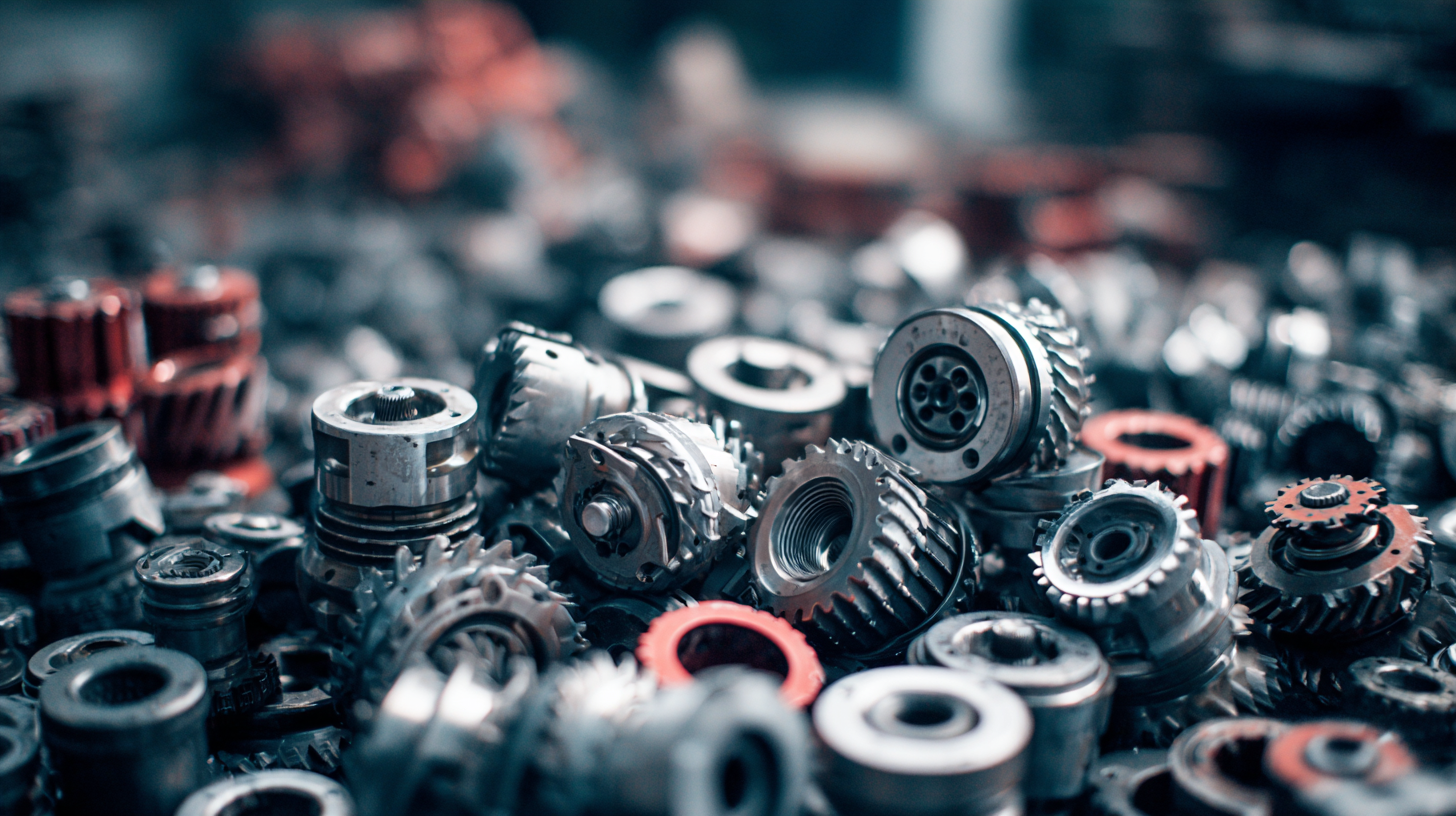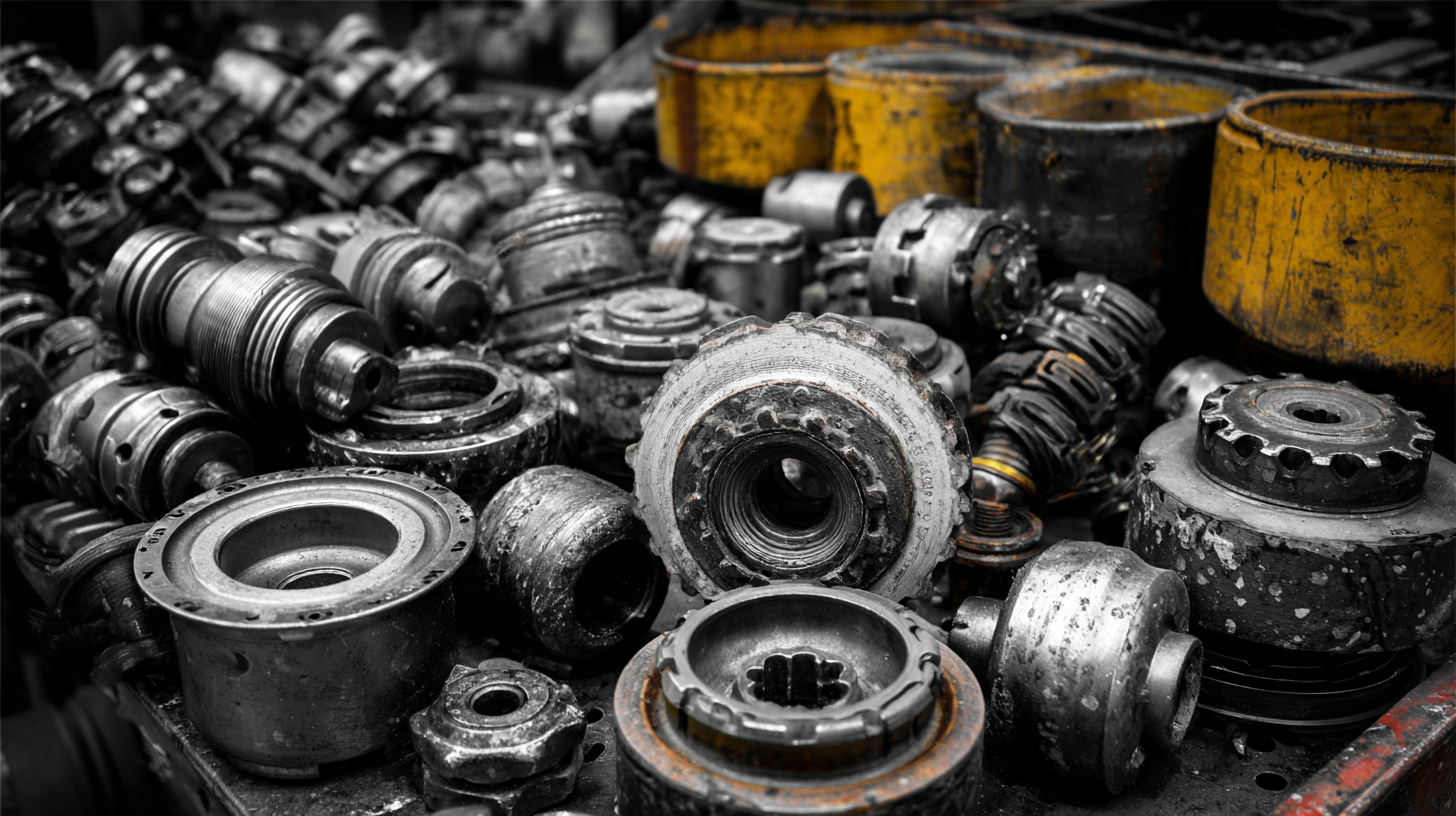A Comprehensive Guide to Selecting the Best Motor Parts Based on Application and Features
In today's rapidly evolving automotive industry, selecting the right motor parts is crucial to optimizing performance and ensuring longevity of vehicles. According to a report by Grand View Research, the global automotive parts market is expected to reach USD 1.9 trillion by 2025, with a significant portion attributed to motor parts, which play a vital role in the overall functionality of vehicles.

As the demand for efficient and durable motor components continues to rise, understanding the specific applications and features of different parts becomes essential for both manufacturers and consumers. This guide aims to provide valuable insights and tips for choosing the best motor parts tailored to particular needs, enabling users to make informed decisions while navigating the complexities of the market.
With technological advancements and increasing aftermarket options, the importance of selecting the appropriate motor parts cannot be overstated in achieving optimal vehicle performance and reliability.
Choosing the Right Motor Parts: Understanding Application Requirements
When selecting the right motor parts for your needs, it’s essential to understand the application requirements thoroughly. Each type of motor serves different functions, from powering vehicles to driving industrial equipment. Therefore, the first step in making the best choice is to identify the specific requirements of your application. Consider factors such as load capacity, operating speed, and environmental conditions—these elements will significantly influence the performance and longevity of the motor parts you select.
Additionally, understanding various features, such as efficiency ratings and compatibility with existing systems, will guide your selection process. For instance, lightweight materials can enhance performance without compromising strength, making them ideal for applications where weight reduction is crucial. By weighing these factors carefully, you can ensure that the motor parts you choose are not only suitable for their intended use but also enhance overall operational efficiency. This informed approach will lead to more successful implementations and ultimately save costs associated with repairs and replacements.

Key Features to Consider: Essential Specifications for Motor Parts
When selecting motor parts, understanding essential specifications is crucial for ensuring optimal performance and compatibility with your application. Key features to consider include material quality, size, weight, and type of motor. According to industry reports, nearly 30% of aftermarket parts sales are driven by performance enhancements and improved durability, highlighting the importance of selecting high-quality components that meet specific needs.
To make an informed choice, integrity of the components should be prioritized. Look for parts that comply with industry standards and have reliable warranties. Implementing fitment tools can greatly enhance the purchasing experience, allowing you to match the right parts according to your vehicle's specifications. Always consult technical data sheets to understand the intended application, as this could prevent costly returns and improve overall satisfaction.
Tips: Always check reviews and ratings before making a purchase. You can often find valuable insights from other users about the reliability and performance of motor parts. Also, consider investing in parts that offer better energy efficiency; they not only enhance performance but can also reduce long-term operational costs.
Types of Motor Parts: A Breakdown of Common Options Available
When it comes to selecting the best motor parts, understanding the different types is crucial for ensuring optimal performance across various applications. The most common motor parts include stators, rotors, bearings, and windings. According to a recent report by Allied Market Research, the global electric motor market is projected to exceed $180 billion by 2027, reflecting a growing demand for high-quality motor components that enhance efficiency and durability.
 Stators and rotors play a fundamental role in motor functionality. Stators, which house the coils that generate magnetic fields, are critical for ensuring effective energy conversion. The choice of materials for these components, such as silicon steel, can significantly impact energy losses and overall performance levels. Furthermore, bearings are essential for reducing friction between moving parts, with the bearing market expected to reach $150 billion by 2026, highlighting the increasing focus on precision-engineered components that promote longevity and reliability in motor applications.
Stators and rotors play a fundamental role in motor functionality. Stators, which house the coils that generate magnetic fields, are critical for ensuring effective energy conversion. The choice of materials for these components, such as silicon steel, can significantly impact energy losses and overall performance levels. Furthermore, bearings are essential for reducing friction between moving parts, with the bearing market expected to reach $150 billion by 2026, highlighting the increasing focus on precision-engineered components that promote longevity and reliability in motor applications.
Another vital aspect to consider is the winding configurations, which affect the motor's speed-torque characteristics. Whether opting for single-phase or three-phase windings, understanding the specific requirements of your application will guide your component selection. The right motor parts not only improve performance but also enhance energy efficiency, a factor that is increasingly important given the rising emphasis on sustainability in the engineering sector.
Compatibility and Integration: Ensuring Parts Work Together Effectively
When it comes to selecting motor parts, ensuring compatibility and integration is crucial for achieving optimal performance. This is particularly true in industries where precision and efficiency are paramount, such as cycling. Recent innovations in bicycle pedal systems, for instance, have demonstrated how well-engineered parts can enhance the overall user experience and mechanical efficiency. According to a report from the National Bicycle Dealers Association, the introduction of advanced designs in pedal systems has resulted in a 15% increase in power transfer efficiency among competitive cyclists.
Selecting parts that not only fit but also work seamlessly with existing components can make all the difference. Data from the International Journal of Automotive Technology shows that incompatibility can lead to a staggering 20% drop in performance due to additional friction and misalignment. Therefore, understanding the interplay between different parts—such as the pedals, calipers, and frame—is essential. Investing in high-quality components that are designed to integrate smoothly can significantly enhance a rider's performance, making it vital for manufacturers and enthusiasts alike to focus on compatibility as a core criterion when selecting motor parts.
A Comprehensive Guide to Selecting the Best Motor Parts Based on Application and Features
This bar chart illustrates the importance ratings of various features when selecting motor parts. Compatibility and integration are prioritized, reflecting their crucial roles in ensuring parts work together effectively.
Budgeting for Quality: Balancing Cost with Performance in Motor Parts Selection
When selecting motor parts, balancing cost with performance is crucial for any application. According to a report by the International Journal of Advanced Manufacturing Technology, over 60% of companies cited budget constraints as a primary factor in their procurement decisions. However, it's essential to understand that opting for the lowest-priced components can lead to performance trade-offs, ultimately affecting the efficiency and longevity of the motor systems. Investing in higher-quality parts may have a more significant initial cost, but this often translates into reduced maintenance expenses and downtime, resulting in a better return on investment in the long run.
Moreover, a recent analysis by the National Association of Manufacturers shows that companies that prioritize quality in motor parts often see performance improvements of up to 25%. This data underscores the importance of a strategic approach to budgeting—factoring in not just the purchase price but also potential savings arising from enhanced efficiency and reliability. Therefore, when budgeting for motor parts, consider the total cost of ownership rather than just the upfront expenditure, as the right components can lead to significant operational benefits and cost savings over time.